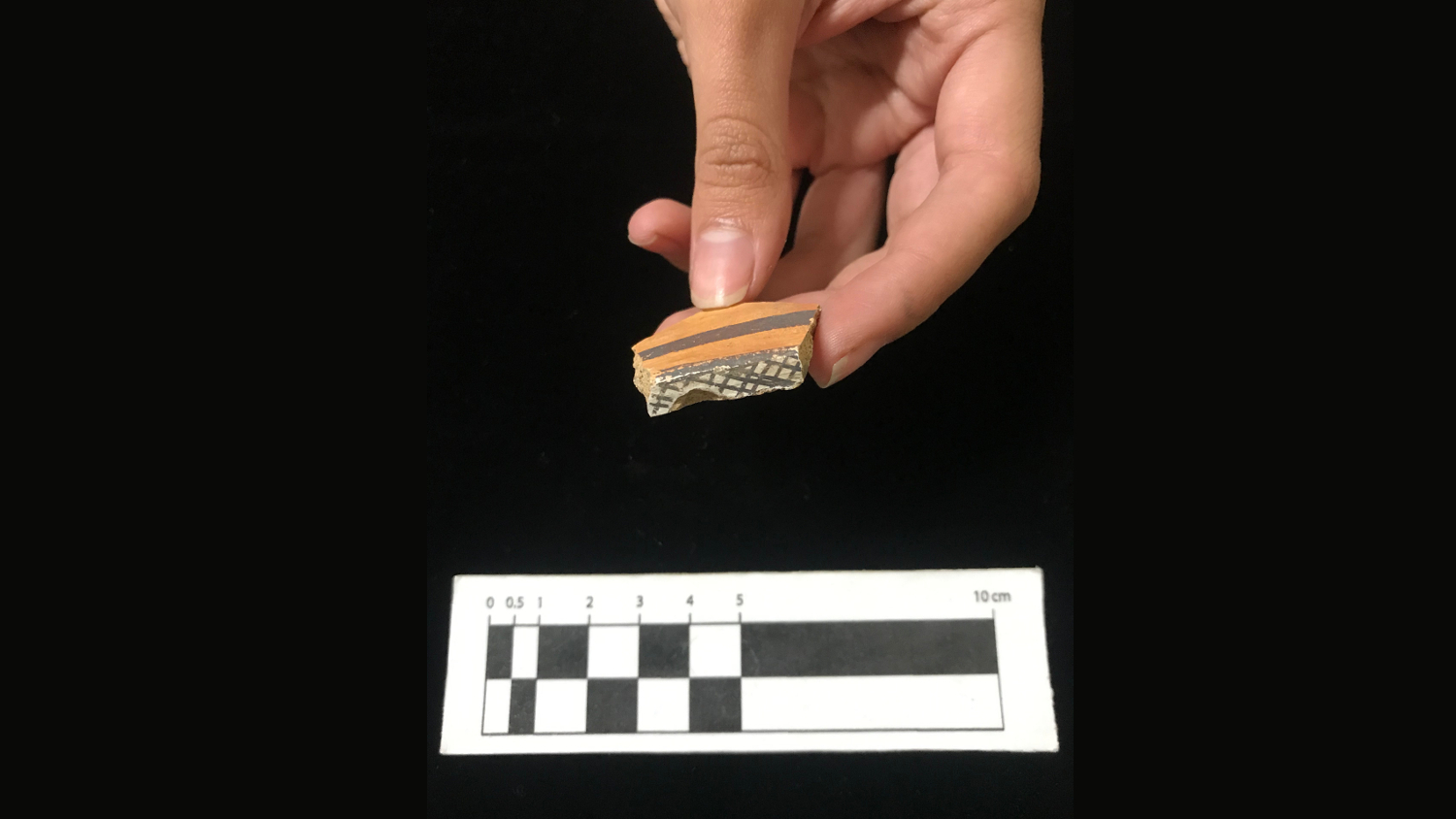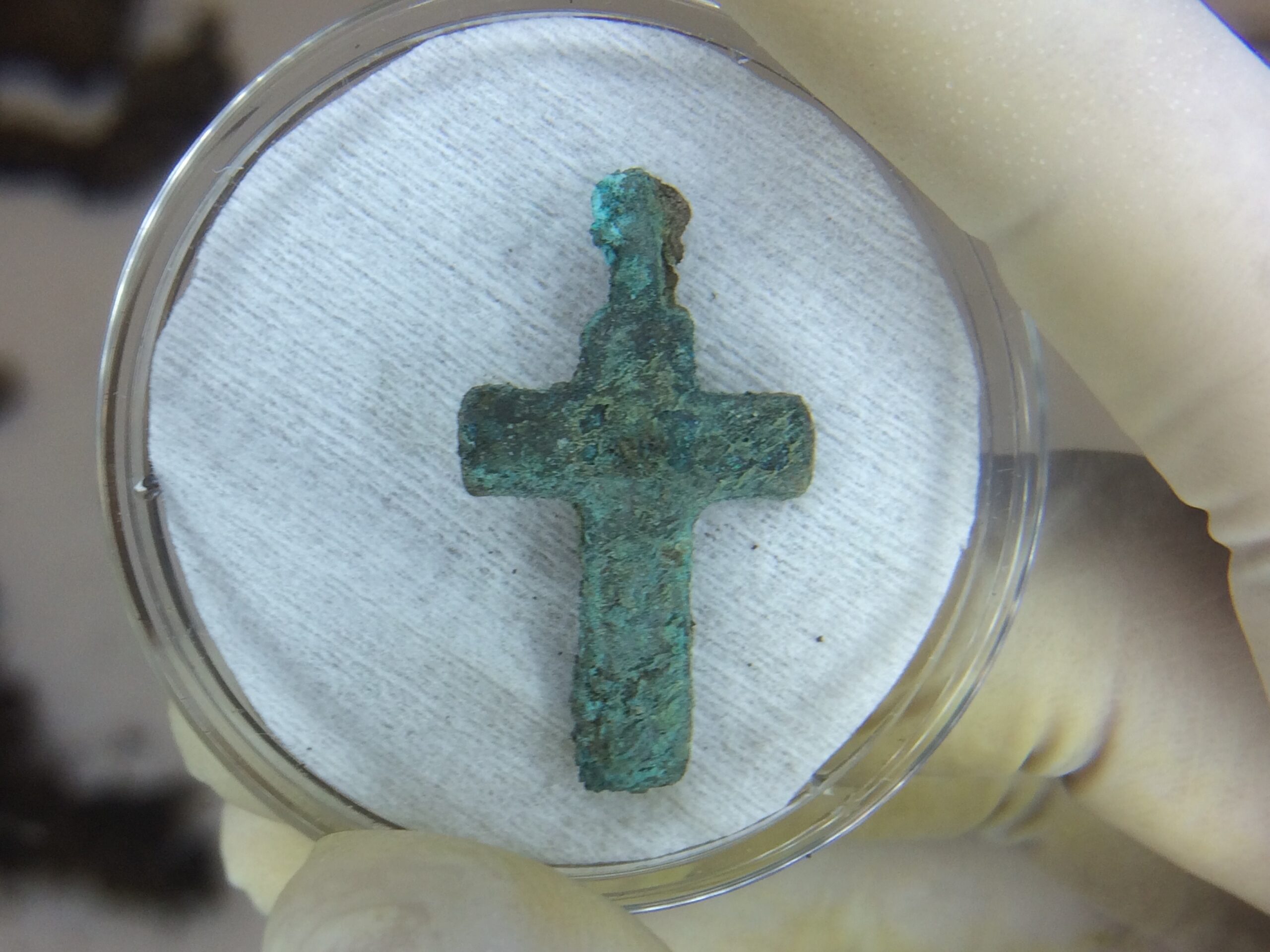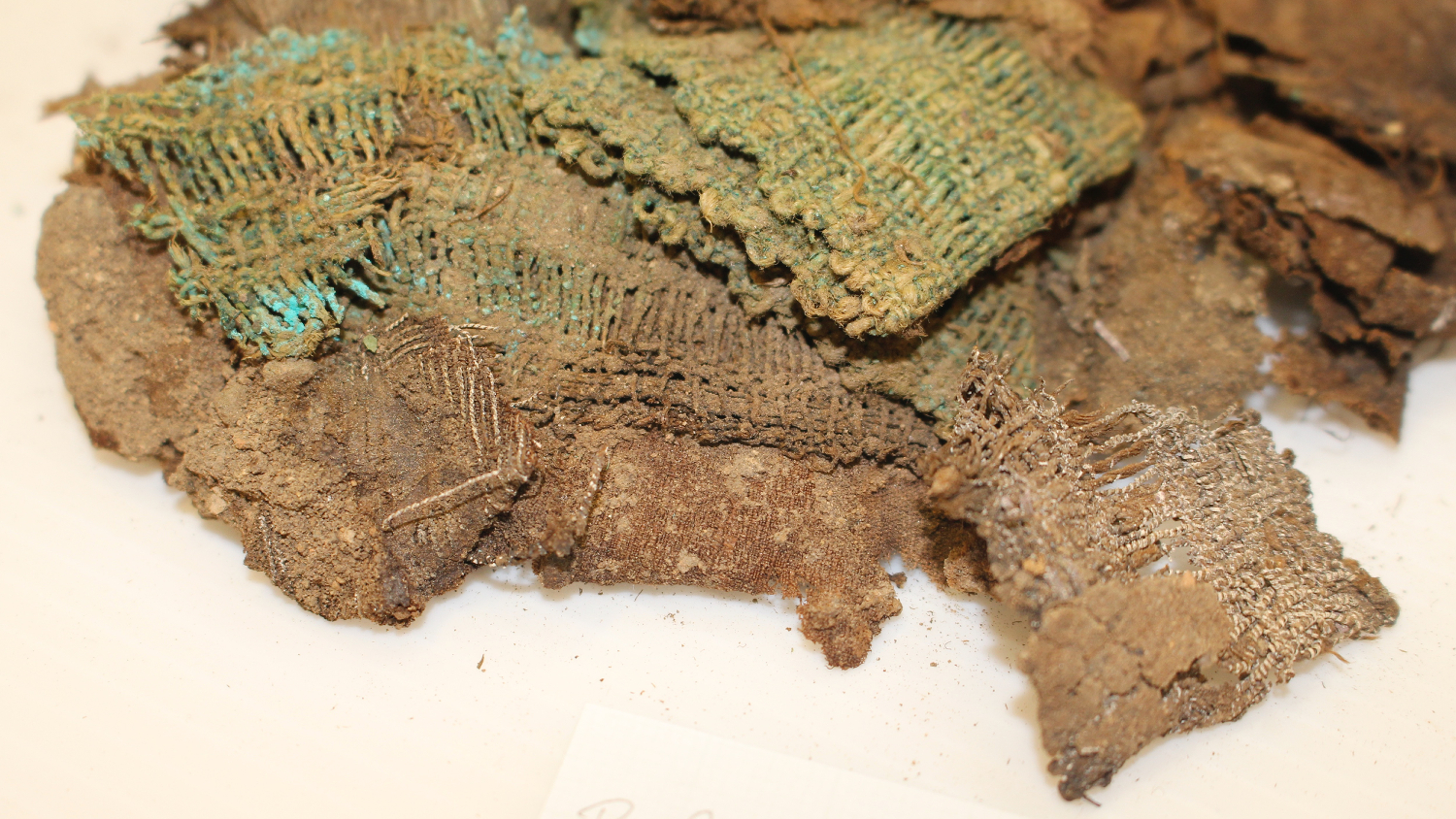Overview of Excavations
Resumen de las excavaciones
The San Ignacio Church Archaeological Project was launched on July 12, 2016, with a fieldwork phase expected to last for just four weeks. As documented in Authorization for Archaeological Intervention No. 5753, issued by the Colombian Institute of Anthropology and History in April 2016, the project originally had simple objectives, arising not only from the need to rescue elements of archaeological heritage at risk of being destroyed by restoration activities, but also from the interest of the Society of Jesus in investigating the history of what was once the original nucleus of their community in present-day Colombia.
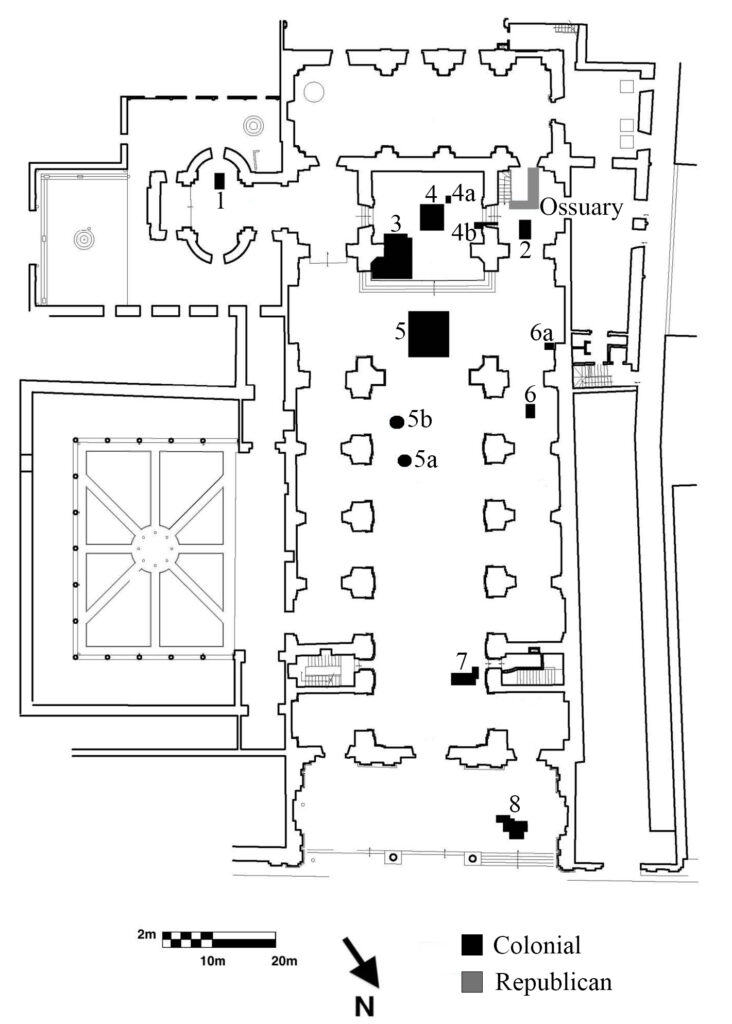
Hay 8 cortes arqueológicos ubicados en áreas diferentes de la iglesia y un contexto de osario con restos óseos humanos mezclados.
Between November and December 2015, the monitoring of trenches excavated during the renovation process of the old electrical wiring and hydraulic pipage of the church had suggested that the archaeological record of the site primarily consisted of recent burials, heavily altered by construction activities carried out throughout the 20th century. However, our own excavations presented us with a very different reality, as the quantity and quality of data we recovered from the subsurface of San Ignacio quickly led us to understand this was the most important archaeological site documented in Bogotá’s historical district to this date.
Our initial plan was to conduct a total of eight targeted stratigraphic probes in key areas of the building. Yet the magnitude, historical significance, and visual impact of the structural remains exposed by our excavations, specifically in the presbytery area, convinced the team of architects leading the San Ignacio’s restoration to modify their original designs and incorporate some of our findings in their final renovation plans. These changes required the implementation of a comprehensive rescue and documentation program for the rich archaeological information contained in the shallowest layers of the presbytery, which were destined to disappear during the church’s restoration works. In doing so, we not only complied with the provisions of Colombian legislation regarding the protection of the nation’s archaeological heritage, but also took the opportunity to develop a vibrant interdisciplinary research program, situated at the intersection of anthropology, history, and critical heritage studies, greatly expanding our understanding of the material and social dynamics of human life in colonial Santafé and Republican Bogotá.
Title Image: View of excavations in the central nave of the church
_________________________________________________________________
El Proyecto Arqueológico Iglesia de San Ignacio inició el 12 de julio de 2016, con una fase de campo que, en principio, no debía superar cuatro semanas. Tal como lo estipula la Autorización de Intervención Arqueológica No. 5753, expedida por el Instituto Colombiano de Antropología e Historia en abril de 2016, el proyecto originalmente tenía objetivos muy sencillos, orientados no solamente al rescate de elementos patrimoniales en riesgo de ser destruidos por las obras de restauración, sino también a la satisfacción del interés que la propia Compañía de Jesús tenía por conocer la historia de lo que aún constituye el núcleo de su comunidad en Colombia.
Entre noviembre y diciembre de 2015, el monitoreo de una regatas excavadas para la instalación de las nuevas redes eléctricas y tuberías de la iglesia había sugerido que el registro arqueológico del sitio consistía principalmente en enterramientos recientes, muy alterados por las actividades de renovación llevadas a cabo en San Ignacio a lo largo del siglo XX. Sin embargo, nuestras excavaciones nos confrontaron con una realidad muy diferente: la cantidad y calidad de los contextos arqueológicos que hallamos en el subsuelo de San Ignacio pronto puso de manifiesto que nos encontrábamos ante uno de los yacimientos arqueológicos más importantes documentados hasta la fecha en el centro histórico de Bogotá.
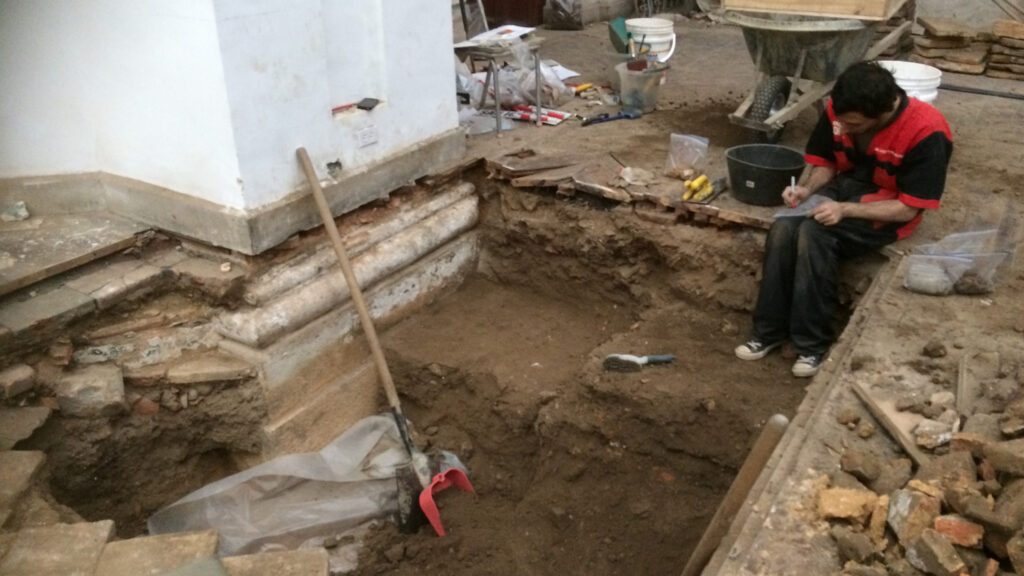
Excavaciones en el presbiterio revelaron la antigua cimentación de la iglesia.
Nuestro plan inicial consistía en realizar un total de ocho sondeos estratigráficos en zonas clave del edificio. Sin embargo, la magnitud, relevancia histórica e impacto visual de los vestigios estructurales expuestos por nuestras intervenciones, concretamente en la zona del presbiterio, llevaron al equipo de arquitectos a cargo de la restauración del San Ignacio a modificar sus planes iniciales e incorporar algunos de nuestros hallazgos al nuevo diseño del edificio. Estos cambios exigieron la puesta en marcha de un amplio programa de rescate y documentación de la rica información arqueológica contenida en las capas menos profundas del presbiterio, que estaban destinadas a desaparecer durante las obras de restauración de la iglesia. Así, al ejecutar nuestro proyecto no sólo cumplimos con disposiciones legales relativas a la protección del patrimonio arqueológico de la nación, sino que también desarrollamos un programa de investigación interdisciplinaria de primera importancia, situado en un cruce de caminos entre la antropología, la historia y la gestión patrimonial, que ha contribuido enormemente a nuestra comprensión de la vida social en la Santafé colonial y la Bogotá republicana.
Imagen de título: Vista de las excavaciones en la nave central de la iglesia
